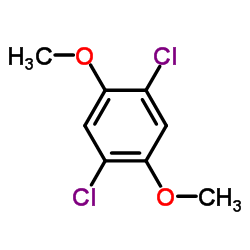The cAMP signal transduction pathway mediates resistance to dicarboximide and aromatic hydrocarbon fungicides in Ustilago maydis.
M A Ramesh, R D Laidlaw, F Dürrenberger, A B Orth, J W Kronstad
文献索引:Fungal Genet. Biol. 32(3) , 183-93, (2001)
全文:HTML全文
摘要
The cAMP signal transduction pathway mediates the switch between yeast-like and filamentous growth and influences both sexual development and pathogenicity in the smut fungus Ustilago maydis. Signaling via cAMP may also play a role in fungicide resistance in U. maydis. In particular, the adr1 gene, which encodes the catalytic subunit of the U. maydis cAMP-dependent protein kinase (PKA), is implicated in resistance to the dicarboximide and aromatic hydrocarbon fungicides. In this study, we examined the sensitivity of PKA to vinclozolin and could not demonstrate direct inhibition of protein kinase activity. However, we did find that mutants with disruptions in the ubc1 gene, which encodes the regulatory subunit of PKA, were resistant to both vinclozolin and chloroneb. We also found that these fungicides altered the morphology of both wild-type and ubc1 mutant cells. In addition, strains that are defective in ubc1 display osmotic sensitivity, a property often associated with vinclozolin and chloroneb resistance in other fungi.Copyright 2001 Academic Press.
相关化合物
| 结构式 | 名称/CAS号 | 分子式 | 全部文献 |
|---|---|---|---|
 |
地茂散
CAS:2675-77-6 |
C8H8Cl2O2 |
|
Matrix effect in guava multiresidue analysis by QuEChERS met...
2016-05-15 [Food Chem. 199 , 380-6, (2016)] |
|
[Use of cytochemical methods for diagnosis in fungicide rese...
1984-01-01 [Acta Histochem. Suppl. 30 , 347-51, (1984)] |
|
Two-way selection of mutants and revertants to chloroneb res...
1982-09-01 [Mutat. Res. 96(1) , 31-9, (1982)] |
|
Degradation of chloroneb, triadimefon, and vinclozolin in so...
1994-10-01 [Bull. Environ. Contam. Toxicol. 53(4) , 536-42, (1994)] |
|
Segregation following interspecific transfer of isolated nuc...
2000-05-01 [Can. J. Microbiol. 46(5) , 410-6, (2000)] |